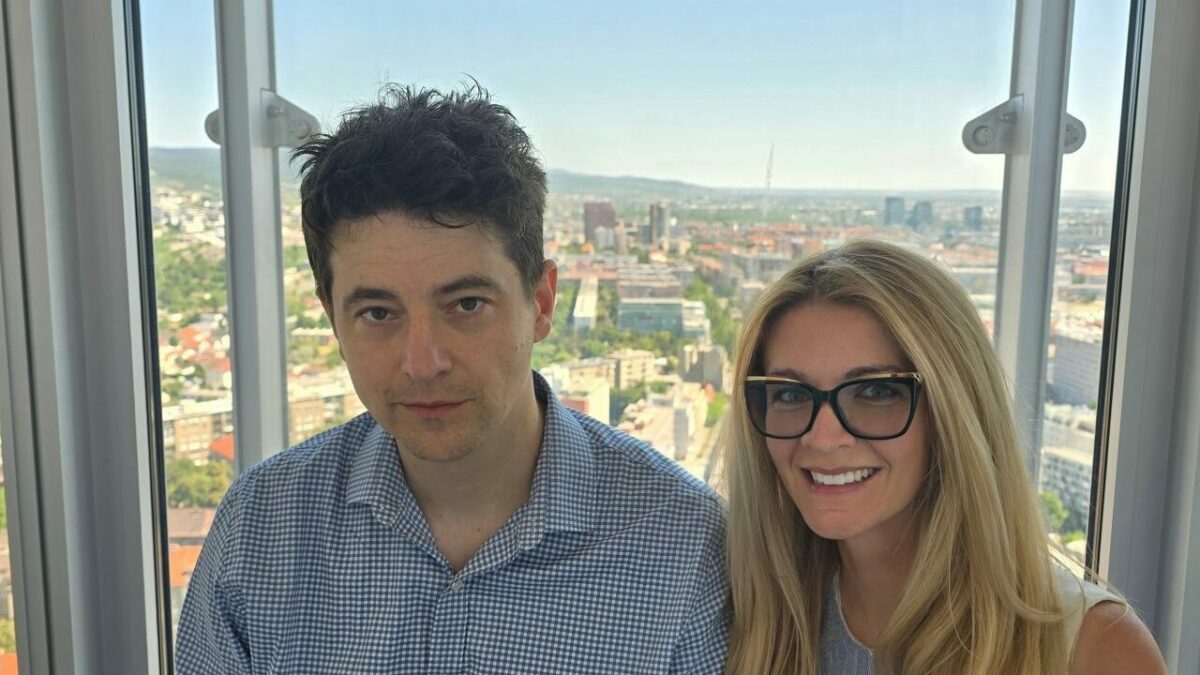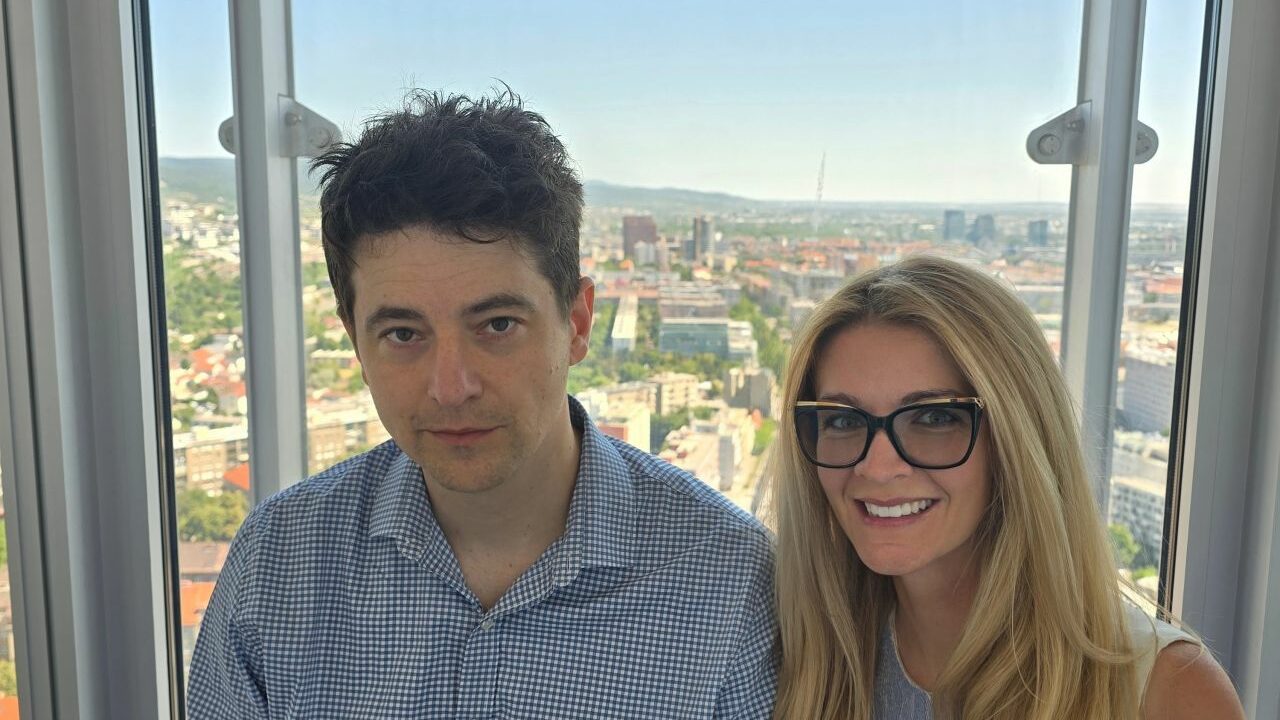Meeting with Michal Valko, expert on large language models
The National Supercomputing Centre and the National Competence Centre for HPC, represented by Lucia Malíčková, met with prominent Slovak scientist Michal Valko, who is among the world’s leading experts in artificial intelligence and machine learning. They discussed opportunities for future collaboration, with a particular focus on leveraging Slovakia’s HPC capacities to support advanced research in large language models and algorithms that require minimal human feedback.
Michal Valko currently serves as Chief Models Officer at a stealth startup, is a researcher at the prestigious French institute Inria, and lectures at ENS Paris-Saclay. In 2024, he also became the principal engineer for Llama at Meta, where he is building the online reinforcement learning infrastructure and conducting research for the Llama 3 models.
His research focuses on designing algorithms that can operate with as little human intervention as possible. This includes deep reinforcement learning, bandit algorithms, unsupervised learning, as well as so-called self play — learning by comparing one’s own outcomes. Recently, he has concentrated on data representations, language models, and developing deep learning algorithms with solid theoretical foundations. He is currently working on algorithmic solutions that enable more efficient fine-tuning and better alignment of large language models (LMMs).
Michal Valko comes from Slovakia, where he attended the Alejová Gymnasium in Košice. Looking back, he especially values the close collaboration between this school and the Faculty of Science at UPJŠ, which sparked his interest in science. He went on to study artificial intelligence and mathematical methods in computer science at the Faculty of Mathematics, Physics and Informatics of Comenius University. In 2011, he earned his PhD at the University of Pittsburgh under the supervision of Miloš Hauskrecht. He then completed his postdoctoral studies with Rémi Munos, with whom he later co-founded Google DeepMind Paris.
Throughout his career, he has also worked on projects with companies such as Intel, Adobe, Technicolor, and Microsoft Research. As early as 2009–2010, during an internship at Intel Labs in Silicon Valley, he contributed to the development of autonomous systems designed to help visually impaired people recognize faces.
The National Supercomputing Centre and the National Competence Centre for HPC will continue to actively seek opportunities to connect Slovakia’s HPC infrastructures with global leaders in the field of artificial intelligence. They believe that this meeting will also lay the groundwork for new ambitious initiatives.
 How Projects Addressing AI in Industry Are Created 2025 19 Nov - Umelá inteligencia sa stáva neoddeliteľnou súčasťou európskeho priemyslu aj výskumu a zásadne mení spôsob, akým vznikajú inovatívne projekty. Európska komisia preto prichádza s dvomi novými AI stratégiami – jednou zameranou na aplikovanie umelej inteligencie v kľúčových priemyselných sektoroch a druhou na vedecké využitie AI. Tieto iniciatívy prinášajú nové investičné a projektové príležitosti aj pre slovenské inštitúcie a firmy, najmä prostredníctvom programu Horizont Európa.
How Projects Addressing AI in Industry Are Created 2025 19 Nov - Umelá inteligencia sa stáva neoddeliteľnou súčasťou európskeho priemyslu aj výskumu a zásadne mení spôsob, akým vznikajú inovatívne projekty. Európska komisia preto prichádza s dvomi novými AI stratégiami – jednou zameranou na aplikovanie umelej inteligencie v kľúčových priemyselných sektoroch a druhou na vedecké využitie AI. Tieto iniciatívy prinášajú nové investičné a projektové príležitosti aj pre slovenské inštitúcie a firmy, najmä prostredníctvom programu Horizont Európa. Online Lecture: HPC & AI – Competition or Collaboration? 7 Nov - On 26 November 2025 at 10:00, we are hosting a special online lecture dedicated to the rapidly evolving topic of the interplay between high-performance computing (HPC) and artificial intelligence (AI). Our guest will be Erwin Laure, one of the most prominent figures in the European HPC ecosystem.
Online Lecture: HPC & AI – Competition or Collaboration? 7 Nov - On 26 November 2025 at 10:00, we are hosting a special online lecture dedicated to the rapidly evolving topic of the interplay between high-performance computing (HPC) and artificial intelligence (AI). Our guest will be Erwin Laure, one of the most prominent figures in the European HPC ecosystem. Success story: The Future of Soil Hidden in Data 5 Nov - High-Performance Computing (HPC) offers researchers the ability to process enormous volumes of data and uncover connections that would otherwise remain hidden. Today, it is no longer just a tool for technical disciplines – it is increasingly valuable in social and environmental research as well. A great example is a project that harnessed the power of HPC to gain deeper insight into the relationship between humans, soil, and the landscape.
Success story: The Future of Soil Hidden in Data 5 Nov - High-Performance Computing (HPC) offers researchers the ability to process enormous volumes of data and uncover connections that would otherwise remain hidden. Today, it is no longer just a tool for technical disciplines – it is increasingly valuable in social and environmental research as well. A great example is a project that harnessed the power of HPC to gain deeper insight into the relationship between humans, soil, and the landscape.

